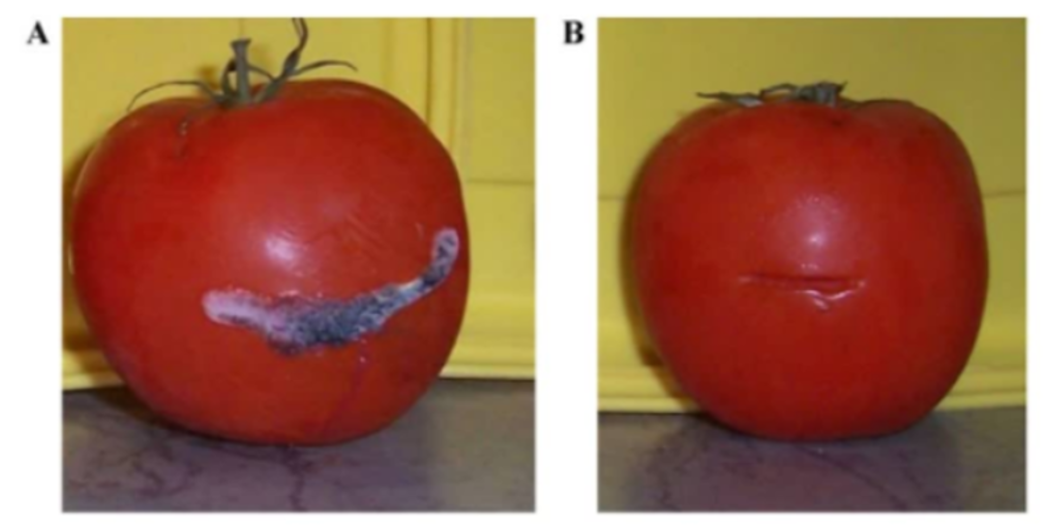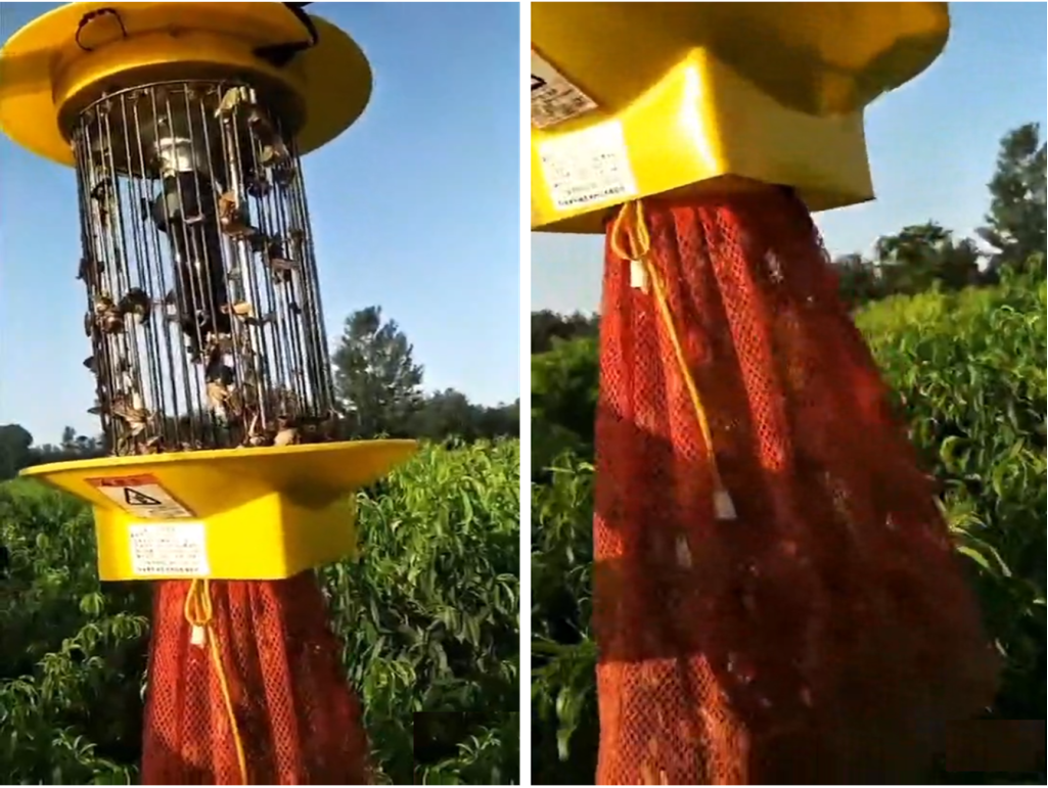7 modern and efficient ways to protect crops from pests and diseases


· 6 min read
Amid the backdrop of declining biodiversity in agricultural ecosystems, a pressing need exists to preserve ecosystem functions, particularly those tied to natural pest control, by implementing ecologically and financially sustainable crop protection practices.
The ecological impacts and potential hazards posed by plant protection products on terrestrial and aquatic organisms are well-documented. Recent initiatives involving stricter regulations and the withdrawal of substances detrimental to pollinators have augmented environmental protection efforts, as well as AI and new technologies based on prevention and tempestive treatments rather than after damage intervention.
Furthermore, the accumulation of evidence suggests that direct human exposure to plant protection products can occur through dermal contact, ingestion, ocular exposure, and inhalation. The documented consequences of such exposure encompass adverse effects on human health, including cancer, endocrine disruption, respiratory ailments, reproductive disorders, and neurological and cognitive impairments.
Historically, the development of plant protection products played a pivotal role in intensifying agriculture during the 20th century. However, the contemporary imperative calls for agriculture that is swifter, more efficient, and circular, eliminating hazards associated with food safety, biodiversity, soil health, water quality, and human well-being.
While the majority of farmers still highly depend on agrochemicals, there is a rising trend toward Integrated Pest and Disease Management measures for sustainable and efficient crop protection.
Picture 1. A.Symptoms caused by Pseudomonas syringae pv. tomato in harvested ripe fruits of L.Esculentum, 7 days after.

B. Flavonoids-based solution (Naturnova) sprayed on mature fruit 24 h before inoculation with bacterial suspension (1×105 CFU ml -1)
“Achieving an environmentally sustainable increase of production and access to affordable healthy diets while protecting and enhancing the livelihoods of the world’s small-scale agricultural producers and other agrifood system actors is a global challenge. Moreover, agricultural production systems still lack integration, optimization, diversification, and innovation while relying on intensive chemical inputs and natural resources (FAO.1).”
Crop protection methodologies are constantly evolving, driven by societal pressures and the ever-evolving needs of agricultural practitioners. The nexus of innovation within the farming sector, facilitated by industry-driven initiatives and rigorous research conducted by universities and research institutions, offers many opportunities for enhancing crop protection techniques. Some are presented below.
1. Mechanical Techniques: Mechanical methods involve the physical manipulation of crops to mitigate pest and disease pressures. These techniques include using barriers, traps, and machinery to deter and manage crop threats.
2. Plant Breeding: The discipline of plant breeding focuses on the genetic enhancement of crop varieties, fostering innate resistance to pests and diseases. Through selective breeding, cultivars with improved natural defenses are developed.
3. Biocontrol: Biocontrol strategies harness the potential of beneficial organisms to regulate pest populations. Predators, parasitoids, and microorganisms are deployed to maintain ecological balance within agricultural systems.
4. Induced Resistance: Inducing resistance within crops through biostimulants or elicitors activates the plant’s innate defense mechanisms. This method enhances the crop’s ability to fend off pathogenic intruders.
5. Applying Ecological Principles in Diversified Systems: Incorporating ecological principles into farming systems involves the creation of diverse agroecosystems. These systems foster natural pest control and reduce the reliance on synthetic inputs.
6. Precision Agriculture (PA) and AI: Precision agriculture employs advanced technologies, including remote sensing and data analytics, to optimize resource allocation, enhance crop health, and minimize environmental impact.
7. Plant Protection Products (PPP): Plant protection products encompass a range of substances, including agrochemicals, organic compounds, and their combinations. These substances can comprise soaps, fungicides, repellents, and botanical compounds.
Picture 2. Treatment with organic vegetal fatty acids (Naturnova) (left) and with agrochemicals (right).

The impact assessment is indicative, i.e., the available data and information is insufficient or inconclusive. The impacts are rated as Positive (+ or + +), Neutral/Unknown (=) or Negative (-)
Interactions among these seven crop protection practices can manifest in various ways, including synergistic reinforcement, neutral coexistence, or mutual exclusion. Their collective aim, however, is to safeguard crops through natural means. Notably, breeding and induced resistance represent preventive measures, while diversified systems and precision agriculture incorporate both preventive and control measures.
Precision agriculture & AI are emerging as a practice with far-reaching positive impacts across multiple facets, prominently enhancing crop yield and competitiveness and switching from linear to circular processes. Although plant protection products can be employed for prevention, their primary and still most common use lies in pest, disease, and weed control.
Picture 3. Wood tannins-based solution (Naturnova Tannifusion) on bean nematodes. Treated plant on top, untreated two plants below.

Biocontrol, induced resistance, and ecological principles all exhibit positive or neutral impacts, with biocontrol and ecological principles notably bolstering biodiversity and crop yield. However, they may have neutral implications for farmer income.
Picture 4. An example of a cover crop matched with PPFM bacterias; while cover crop provides Erosion control, weed suppression, nutrient scavenging, and improved soil structure, PPFM bacterias work against salinity, fungal, and bacterial diseases, enhancing adversity resistance.

While beneficial in weed control, enhanced mechanical techniques can have adverse effects on climate change due to increased greenhouse gas emissions from soil disruption and heightened fuel consumption; this implies the need for alternative and more sustainable solutions.
Picture 5. IPM Solar settable device against pests (Naturnova).

It is imperative to recognize that the presented analysis does not account for potential synergistic interactions between these crop protection practices. Precision agriculture, coupled with improved sprayer technology, is promising for optimizing pesticide application efficiency and reducing overall usage. Moreover, the collective integration of these practices can conceivably lessen the future reliance on plant protection products.
Table 1. Potential impacts* of new and emerging crop protection practices on the control of weeds, diseases, and insects

Precision agriculture, AI, and ecological principles demonstrate significant potential impact across all categories regarding controlling pests, diseases, and insects. Plant breeding exhibits a high potential to address diseases and an intermediate potential to manage weeds and insects. While playing critical roles, mechanical techniques, biocontrol, and induced resistance vary in their potential to address these challenges.
Regenerative agriculture is poised to emerge as the predominant approach for the future, emphasizing a return to natural principles. A significant impediment, however, resides in the apprehension toward transformation among agricultural stakeholders. The prospect of incorporating sustainable inputs, technology, and equipment to safeguard food production and promote a cleaner agricultural future instills trepidation among farmers. It is imperative to elevate participants’ awareness in the agricultural supply chain, ensuring that innovative solutions effectively address pertinent issues and are accessible to farmers.
Historically, the primary emphasis has been on maximizing yield outcomes. Still, in contemporary contexts, there is a growing recognition of the importance of considering the methodologies and rationales underpinning agricultural practices, which haven’t yet spread across the whole chain.
In conclusion, the field of crop protection continues to evolve, necessitating ongoing research and education for both upstream and downstream stakeholders in the agricultural sector. These innovative approaches represent significant strides toward sustainable agriculture, aligning with global sustainability objectives. By harnessing the power of nature-based solutions, we can fortify the resilience and long-term viability of our food supply chains, ushering in a future grounded in natural harmony.
illuminem Voices is a democratic space presenting the thoughts and opinions of leading Sustainability & Energy writers, their opinions do not necessarily represent those of illuminem.
Riemens, Marleen. “The future of crop protection in Europe.” (2021).
https://www.fao.org/plant-production-protection/about/en
Buckwell, A., De Wachter, E., Nadeu, E., Williams, A. 2020. Crop Protection & the EU Food System. Where are they going? RISE Foundation, Brussels.
illuminem briefings

Agriculture · Public Governance
Michael Wright

Agriculture · Environmental Sustainability
Yury Erofeev

Food · Agriculture
Politico

Climate Change · Agriculture
The Guardian

Climate Change · Agriculture
The Guardian

Agriculture · Climate Change